Picture this: your car’s tires, the unsung heroes of every journey, silently gripping the road beneath you. Over time, each tread endures a unique pattern of wear, a subtle testament to the directions you take and the surfaces you conquer. But what if there was a simple way to balance this wear, extending the life of your tires and ensuring a smoother, safer ride? Enter the art and science of tire rotation—a maintenance ritual that, when done right, keeps your tires wearing evenly and your drives running efficiently. In this article, we’ll guide you through the essentials of rotating tires, helping you unlock the secret to maximizing tire longevity and performance.
Table of Contents
- Understanding the Importance of Tire Rotation for Vehicle Safety
- Identifying Signs That Indicate Uneven Tire Wear
- Exploring Different Tire Rotation Patterns and Their Benefits
- Step-by-Step Guide to Rotating Tires at Home
- Choosing the Right Tools and Equipment for Tire Rotation
- Expert Tips to Maintain Tire Longevity After Rotation
- Q&A
- To Wrap It Up
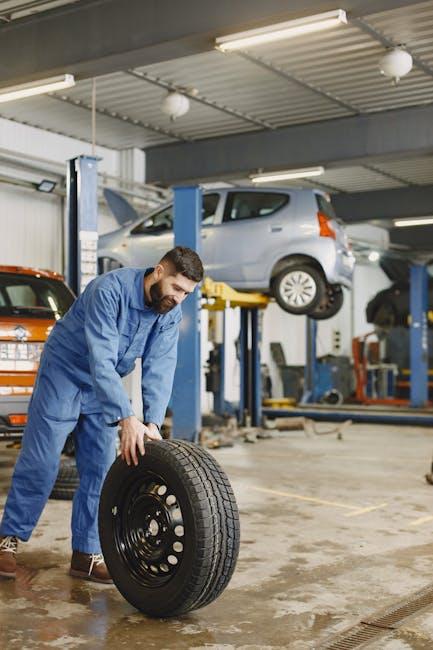
Understanding the Importance of Tire Rotation for Vehicle Safety
Regular tire rotation plays a pivotal role in maintaining your vehicle’s safety by promoting uniform tire wear. When tires wear unevenly, they can affect the car’s handling, braking distance, and overall stability, especially in adverse weather conditions. By rotating your tires at recommended intervals, usually every 5,000 to 7,500 miles, you help distribute tread wear more evenly across all four tires. This ensures better traction, improves fuel efficiency, and extends the lifespan of each tire, ultimately protecting you and your passengers on the road.
Additionally, tire rotation helps prevent costly repairs by reducing stress on suspension components. Uneven tire wear can lead to vibration, increased noise, and alignment problems. Incorporating a routine rotation schedule supports consistent tread depth, which is crucial for optimal grip and braking performance. Here are some key benefits of tire rotation:
- Enhanced vehicle stability in diverse driving conditions
- Improved handling during cornering and braking
- Extended tire lifespan leading to cost savings
- Even tread wear patterns that prevent premature tire failure
| Rotation Pattern | Recommended For | Frequency |
|---|---|---|
| Front-to-Rear | Rear-wheel drive vehicles | Every 5,000 miles |
| X-Pattern | Front-wheel drive vehicles | Every 7,500 miles |
| Forward Cross | Front-wheel drive vehicles | Every 6,000 miles |
| Rearward Cross | Rear-wheel and 4WD vehicles | Every 6,000 miles |

Identifying Signs That Indicate Uneven Tire Wear
Spotting uneven tire wear early can save you from costly repairs and compromised safety. Look closely at the tread patterns on your tires—are certain areas appearing more worn out than others? For example, feathered edges along the tire tread may suggest misalignment, while excessive wear on just one edge often hints at incorrect camber settings. Also, if your tires feel unusually noisy or if you notice vibrations while driving, these might be subtle signals that wear is uneven.
Here’s a quick checklist to help you identify possible trouble spots:
- Center wear: Indicates over-inflation.
- Edge wear: Under-inflation or aggressive cornering.
- Patchy or cupped areas: Suspension or balance issues.
- One-sided wear: Poor wheel alignment.
| Wear Pattern | Possible Cause | Recommended Action |
|---|---|---|
| Center Wear | Over-Inflation | Check and adjust tire pressure |
| One Edge Worn | Alignment Problem | Get a wheel alignment |
| Patchy Wear | Suspension Issue | Inspect suspension components |
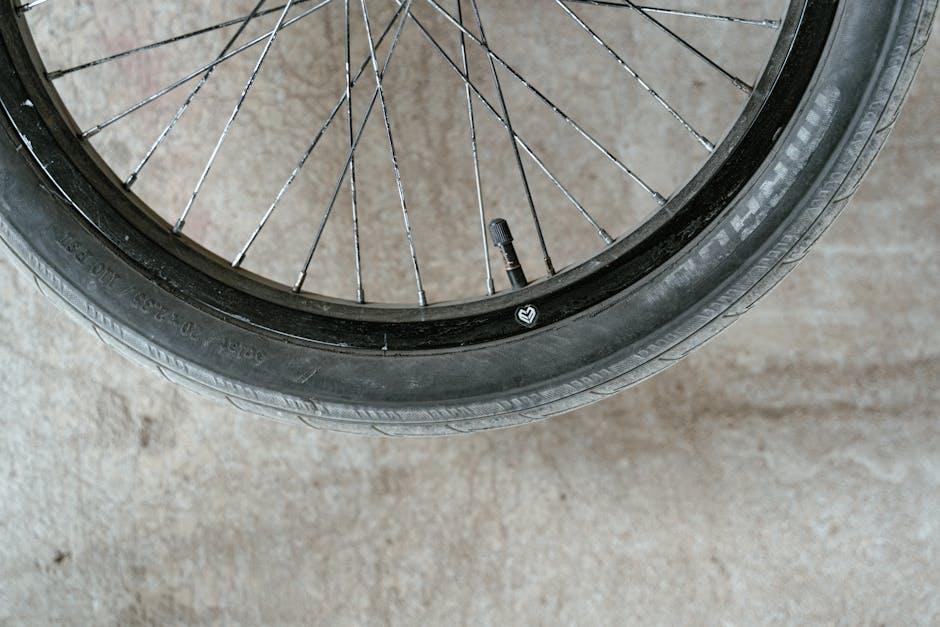
Exploring Different Tire Rotation Patterns and Their Benefits
Tire rotation isn’t a one-size-fits-all task; selecting the right rotation pattern depends on your vehicle’s drivetrain and tire type. The front-to-back rotation is widely used for vehicles with non-directional tires and all-wheel or four-wheel drive. This method swaps the front tires directly with the rear ones on the same side. In contrast, the X-pattern rotation crisscrosses tires, sending each to the opposite axle and side. This pattern is often preferred for front-wheel-drive vehicles to promote even wear on tread surfaces experiencing different forces. Directional tires, designed to move forward in a specific direction, require a front-to-back swap only, avoiding side switches to maintain performance.
Each rotation pattern offers distinct benefits, from enhancing tire lifespan to improving vehicle safety and efficiency. Here’s a quick comparison for clarity:
| Rotation Pattern | Best For | Key Benefit |
|---|---|---|
| Front-to-Back | 4WD/AWD, Non-directional tires | Balanced wear across axles |
| X-Pattern | Front-Wheel Drive | Improves tread longevity and handling |
| Side-to-Side | Directional tires | Maintains proper tread direction |
By understanding these patterns, drivers can better schedule tire maintenance and optimize their tires’ performance and safety on the road.
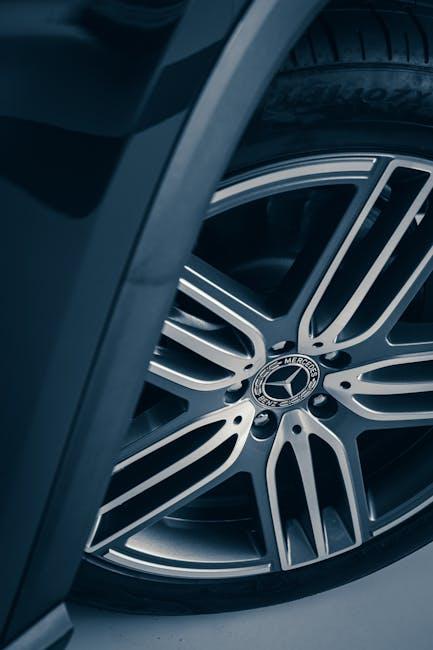
Step-by-Step Guide to Rotating Tires at Home
Begin by preparing your workspace. Park your vehicle on a flat, stable surface and engage the parking brake for safety. Gather essential tools such as a jack, jack stands, a lug wrench, and a torque wrench. Before lifting the vehicle, slightly loosen the lug nuts on each tire while the wheels are still on the ground. This prevents excessive strain when the tires are elevated. Once ready, use the jack to lift one corner of the car and place a jack stand securely underneath for support. Repeat this process for all four tires, one at a time, to ensure stability during the rotation.
Next, follow the appropriate tire rotation pattern based on your vehicle’s drivetrain to promote even wear. Common patterns include:
- Front-Wheel Drive: Move front tires straight back; cross rear tires to the front.
- Rear-Wheel Drive or 4WD: Move rear tires straight forward; cross front tires to the rear.
- Directional Tires: Tires only switch front to back on the same side.
Unscrew each lug nut completely, remove the tire, and install it in its new position. Hand-tighten the lug nuts initially, then lower the vehicle and tighten them to the manufacturer’s recommended torque using a torque wrench. This ensures your wheels remain securely fastened, optimizing both safety and tire longevity.
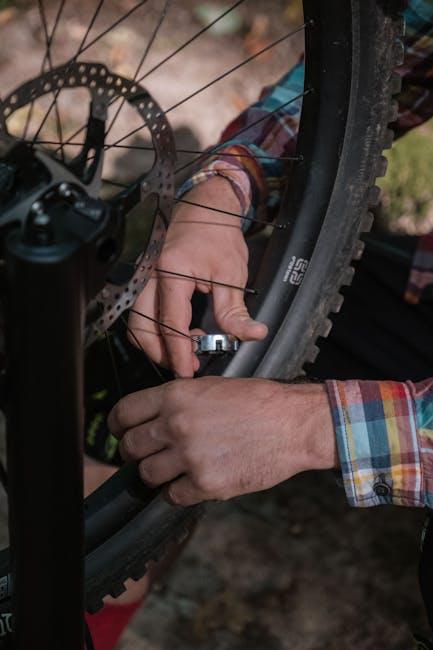
Choosing the Right Tools and Equipment for Tire Rotation
To ensure a smooth and safe tire rotation process, having the proper tools and equipment is essential. Start with a quality floor jack capable of lifting your vehicle’s weight, paired with sturdy jack stands to securely support the car once elevated. Never rely solely on the jack, as stability is key to both safety and ease of tire removal. Additionally, a lug wrench or breaker bar with enough leverage will make loosening stubborn lug nuts much less of a chore. Using the right tools helps avoid damage to your wheels and nuts while speeding up the process significantly.
Other handy items that can streamline the rotation include:
- Tire pressure gauge: For checking and adjusting tire pressure after rotation.
- Chalk or tire markers: To label the tires’ original positions, helping maintain proper rotation order.
- Torque wrench: To tighten lug nuts to manufacturer-specified settings, preventing over-tightening or uneven pressure.
| Equipment | Purpose | Recommended Feature |
|---|---|---|
| Floor Jack | Lift vehicle safely | Hydraulic, 2-ton capacity |
| Jack Stands | Support car securely | Adjustable height, sturdy base |
| Lug Wrench | Loosen/tighten lug nuts | Cross-shaped or breaker bar |
| Torque Wrench | Ensure proper nut tightness | Adjustable torque settings |
| Tire Pressure Gauge | Measure tire pressure | Digital or analog display |

Expert Tips to Maintain Tire Longevity After Rotation
Maximizing the lifespan of your tires goes beyond just regular rotation; it requires deliberate care and observation. After each rotation, inspect your tires for signs of uneven wear, embedded debris, or sidewall damage. Maintaining optimal tire pressure according to your vehicle’s guidelines is equally crucial—underinflated or overinflated tires not only reduce efficiency but accelerate wear. Incorporate a tire balancing check every 6,000 miles to ensure smooth operation, which prevents irregular tread wear and vibrations that can lead to costly repairs.
Adopting a systematic approach to tire maintenance can save you money and elevate safety. Here’s a quick checklist to keep your tires durable and performing at their best:
- Rotate Tires Every 5,000 to 7,000 Miles: Follow your vehicle manufacturer’s rotation pattern for best results.
- Maintain Proper Tire Pressure: Use a reliable gauge and adjust monthly, including the spare tire.
- Monitor Wheel Alignment and Suspension: Misalignments cause uneven wear; get checked annually.
- Balance Tires Regularly: Reduces vibrations and promotes even tread wear.
- Use Season-Appropriate Tires: Switching between summer and winter tires can prolong tread life.
| Maintenance Step | Recommended Frequency |
|---|---|
| Tire Rotation | Every 5,000-7,000 miles |
| Pressure Check | Monthly |
| Wheel Balancing | Every 6,000 miles |
| Alignment Inspection | Annually |
Q&A
Q: Why is rotating tires important for even wear?
A: Rotating tires helps distribute wear evenly across all four tires. Since front and rear tires experience different stresses—like steering forces on front tires and weight differences on rear tires—rotating them regularly ensures no single tire wears out prematurely, extending their lifespan and maintaining balanced handling.
Q: How often should I rotate my tires?
A: A good rule of thumb is every 5,000 to 7,500 miles, or as recommended by your vehicle’s manufacturer. Some drivers coordinate tire rotation with oil changes to keep maintenance streamlined.
Q: What are the most common tire rotation patterns?
A: The three popular patterns are:
- Forward Cross: Front tires move to the rear on the same side; rear tires cross to the front.
- X-Pattern: Both front and rear tires cross sides as they move to the opposite axle.
- Rearward Cross: Rear tires move straight forward; front tires cross to the rear.
The best pattern depends on whether your vehicle is front-, rear-, or all-wheel drive.
Q: Can I rotate tires myself, or should I visit a professional?
A: If you have the right tools—jack, jack stands, lug wrench—and know the proper rotation pattern for your vehicle, you can rotate your tires at home. However, many drivers prefer professionals to ensure it’s done safely and to have the tire pressure and alignment checked simultaneously.
Q: How do I know if my tires are wearing unevenly?
A: Uneven wear patterns include balding on one edge, cupping, or a feathered tread feel. If you notice vibration, pulling to one side, or visible wear discrepancies, it’s a good idea to check tire alignment and rotation history.
Q: Does tire rotation affect vehicle safety?
A: Absolutely. Even tire wear helps maintain traction, braking performance, and steering control. Skipping rotations can lead to uneven tread wear that compromises grip, especially in wet or slippery conditions.
Q: Are there exceptions where rotating tires isn’t advised?
A: Some tires are directional (designed to rotate in one direction only) or staggered by size front to rear. For these cases, rotation patterns are more limited, and sometimes rotating side to side isn’t recommended. Always check your tire and vehicle manuals before proceeding.
Q: What else should I check when rotating my tires?
A: Take the opportunity to inspect tire pressure, tread depth, and look for any damage like cuts or punctures. Balancing tires and checking wheel alignment during rotation also improves tire performance and longevity.
Q: How does tire rotation tie into overall vehicle maintenance?
A: Tire rotation keeps your tires healthy, which supports suspension and drivetrain systems by reducing uneven stress. It’s a small effort that prevents bigger maintenance headaches down the road.
Q: What’s the takeaway for drivers wanting their tires to last?
A: Rotate regularly, follow your vehicle’s recommendations, use the appropriate pattern, and stay vigilant for uneven wear. A little care today saves money and hassle tomorrow, keeping your ride smooth and safe.
To Wrap It Up
In the journey of vehicle maintenance, tire rotation plays a quiet yet pivotal role. By regularly swapping your tires’ positions, you not only extend their lifespan but also safeguard your driving experience with improved grip and handling. So, next time you think of keeping your ride smooth and steady, remember: a simple rotation might just be the key to unlocking even wear and long-lasting performance. Your tires—and your wallet—will thank you.

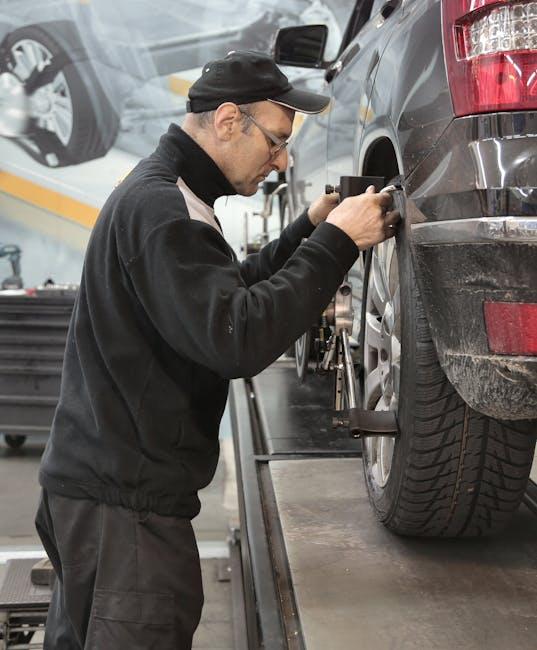
5 Comments
wi31c3
wi31c3
ek3wwh
3tvj2d
qnuqko